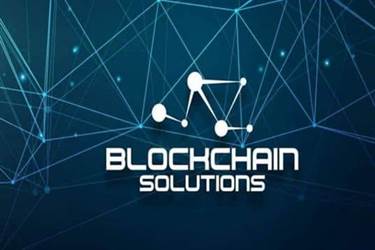Shorter cycle instances mean sooner delivery of worth to users and quicker suggestions for builders. Changing to an environment that uses steady integration and delivery means making elementary changes to the way in which you assume about your company. The first step towards making these adjustments is gaining an understanding of the CI/CD pipeline to find a way to implement the changes your organization needs. The CI/CD pipeline defines the steps required to build, test, and deploy software program purposes. The particular steps may differ depending on the type of application you’re building, but they generally adhere to the next circulate.
If you might have one thing you wish to automate, you’re going to need a CI/CD pipeline. Continuous integration (CI) aims to solve this drawback, making agile development processes potential. Continuous integration means that every change builders make to their code is immediately built-in into the principle department of their software program project.
Best Practices For Securing The Ci/cd Pipeline
Continuous delivery automates the release course of, sustaining a state the place any model of the software program could be deployed to a manufacturing environment at any given time. Continuous deployment goes a step additional by routinely deploying each change that passes the automated tests to manufacturing, minimizing lead time. The next step within the pipeline is continuous supply (CD), which places the validated code modifications made in continuous integration into choose environments or code repositories, such as GitHub.

Development and testing teams usually have access to restricted resources or share an setting to check code changes. In giant projects, multiple teams might commit code to a single setting simultaneously. Different commits and tests might require different configurations, and in the event that they depend on the identical infrastructure, their needs can conflict.
These steps are typically automated with scripts or via workflows in automation instruments. Deployments additionally normally connect with error reporting and ticketing tools to seek out surprising errors after the build is deployed and alert developers. Users also can submit bug tickets to denote actual or perceived errors with the release. In the normal software program improvement course of, multiple builders produce code, and solely in the course of the end of a launch do they consolidate their work.
What Is Launch Orchestration?
The CI/CD pipeline contains a variety of on-premises and cloud-based resources used to build, check and run code. Each platform in the CI/CD toolchain requires secrets and privileged credentials to entry different assets, including different tools, to tug code from repositories, and so on. While most tools have some type of native build in capability to secure credentials, the capabilities vary widely. For instance, many tools can’t rotate secrets or track their utilization for audit. Moreover, too usually secrets and techniques and cloud credentials are hardcoded, which makes then effectively virtually impossible to rotate and alter.
Container images can define the event environment, testing or staging surroundings, and manufacturing setting. The same container picture with slight variations could be promoted throughout the pipeline, enabling consistency in improvement and testing. In a CI/CD course of, containers can be utilized to deploy a build to each stage of the pipeline. Traditional CI/CD pipelines usually require multiple assets, parts, and processes. Once a pipeline is up and operating, it will need to have a secure model to run all of the processes. Unexpected updates can derail the entire pipeline and slow down the deployment process.
- See how world-class CI/CD, automation, and safety can help your workflow.
- Ideally, a developer need solely “press the button” to whisk a new construct from the code repository through testing and on to delivery or deployment.
- It lays out the process and tools for all builders and business customers, and explains how every little thing is related and configured.
- CI/CD emphasizes automation throughout the event lifecycle (Buid, Test, Deploy).
Mean time to restoration (MTTR) and mean time to failure (MTTF) mirror the reliability of the CI/CD pipeline. MTTR measures the common time it takes to get well from a failure, while MTTF measures the common time between failures. We didn’t cover all the built-in standing checks in GitHub, however we’ve included those most important to a sound CI course of. Now that you’ve an image of the place we’re going, let’s break it down and discuss how to implement these best practices. Apart from particular person options and enhancements, one major contribution to the Argo ecosystem is the introduction and internet hosting of the Codefresh Hub for Argo Workflows. The Hub allows you to to find curated Argo templates, use them in your workflows, share and reuse them in a way that was never possible earlier than.
If you employ an on-prem pipeline, you’ll have to arrange the tooling by installing a CI server. It utilizes construct and test automation tools within your on-prem environment. Collaboration instruments characterize another key category that isn’t a part of the pipeline. Developers and IT engineers use software program like Slack or Microsoft Teams to communicate. It helps to create notifications or alerts based on the status of the pipeline.
Most CI/CD instruments let builders kick off builds on demand, triggered by code commits within the model management repository, or on an outlined schedule. Teams want to determine the construct schedule that works best for the scale of the group, the number of day by day commits expected, and different utility concerns. A greatest follow is to make sure that commits and builds are quick; otherwise, these processes could impede teams making an attempt to code rapidly and commit frequently. Feedback inside the CI/CD pipeline is handiest when every step — and every participant — actively works to spot and tackle issues to save lots of time and work effectively. This begins with spotting errors within the supply code and continues throughout testing and deployment. For instance, discover and fix a syntax error in the supply code on the construct stage, somewhat than waste time and effort during the testing phase.
Plus, a strong CI/CD pipeline will embody the power to perform a rollback in case something surprising occurs. The course of begins when a developer issues a pull request, and new code adjustments are merged into the main department. This triggers a CI course of, which pushes pictures to a Docker registry and commits image tags to a Git repository.
Version Control Issues
Once builders push code to the shared repository, the CI server routinely triggers a build-and-test course of, highlighting any issues on the fly. The course of significantly lessens the time and effort spent on handbook integration, leaving builders free to concentrate on code enhancements. As a technology-driven process, CI/CD integrates with version control systems, construct servers, and different improvement tools.
Red Hat® OpenShift® Pipelines is a Kubernetes-native CI/CD resolution which builds on Tekton to supply a CI/CD experience via tight integration with OpenShift and Red Hat developer tools. OpenShift Pipelines is designed to run each step of the CI/CD pipeline in its own container, allowing each step to scale independently to fulfill the calls for of the pipeline. Tests similar to static code analysis, dynamic evaluation, and penetration testing may help pinpoint safety vulnerabilities earlier than deploying the appliance. Frequent deployments reduce the batch measurement of modifications, making it easier to establish and repair issues. They additionally accelerate suggestions, make rollbacks more feasible, and reduce the time to deliver value to users.

DevOps rules can’t turn into operational till you may have a CI/CD pipeline in place. By remaining aware of stakeholder necessities, and communicating the advantages of the CI/CD pipeline, you possibly can persuade stakeholders and avoid disrupting the CI/CD course of as a outcome of urgent requests. Here are a few greatest practices that may assist you to follow CI/CD more effectively. OpenShift Pipelines is a CI/CD resolution primarily based on the open source Tekton project.
Large legacy projects could also be notably problematic as a outcome of a single change to 1 workflow could necessitate changes in others, potentially triggering a whole restructuring. Teams can also want to consider managed CI/CD instruments, which are available from a variety cicd monitoring of distributors. The major public cloud suppliers all supply CI/CD options, along with GitLab, CircleCI, Travis CI, Atlassian Bamboo, and many others. A development group might employ a number of editors or IDEs to assist a quantity of languages for different initiatives.
How Do You Implement A Ci/cd Pipeline?
Most successful CI implementations embrace the build process as the first step within the CI/CD cycle, making sure that software program is packaged in a clean setting. This eliminates human error and reduces the prospect of ignored artifacts or incorrect artifacts included by mistake. Also, any artifacts generated must be versioned and uploaded to Git, to make certain that each time they are wanted in the course of, the same version of the build is out there. In many instances, confidential data have to be provided during the build and deployment process in order that deployed sources can entry it. This is especially essential when deploying microservices utilizing the auto-scaling capabilities of instruments like Kubernetes. The CI/CD pipeline performs continuous integration, supply, and deployment in 4 phases—source, construct, test, and deploy.
Continuous supply automates the discharge of validated code to a repository following the automation of builds and unit and integration testing in CI. It’s a solution to the problem of poor visibility and communication between dev and business teams. To that finish, the https://www.globalcloudteam.com/ aim of steady supply is to have a codebase that’s always prepared for deployment to a manufacturing setting, and ensure that it takes minimal effort to deploy new code.
The alternative between continuous delivery and continuous deployment depends on the chance tolerance and particular wants of the development teams and operations groups. Continuous integration (CI) refers to the apply of mechanically and regularly integrating code changes right into a shared supply code repository. Continuous delivery and/or deployment (CD) is a 2 part process that refers to the integration, testing, and supply of code changes. Continuous delivery stops wanting computerized production deployment, while continuous deployment mechanically releases the updates into the manufacturing setting. The demand for rapid software program improvement and delivery has elevated the usage of open source third-party integrations.
